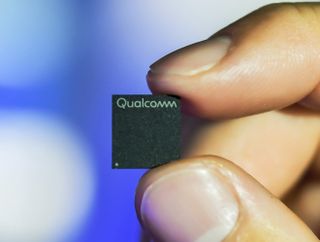Qualcomm's bigger SC8280 may be a Windows on ARM successor to the 8cx
Could Qualcomm finally be readying its most powerful Windows on ARM processor yet?

What you need to know
- The Qualcomm SC8280 may be a new, more powerful ARM processor for PC.
- The chip reportedly supports up to 32GB of RAM and even LPDDR5.
- It has a slightly larger size than current Snapdragon chips.
- No details on power, performance, or even architecture are known.
ARM processing for mobile computing got a big push in the last few months with Apple jumping on board and quickly taking the lead in performance. During this time, Qualcomm has mostly been quiet save for a very mild refresh to the current Snapdragon 8cx with a "Gen 2" bringing 5G and slightly faster clock speeds.
According to the site WinFuture.de, Qualcomm does have another chip on the way currently known as "SC8280," although a final marketing name is likely to be different. The info comes via "import-export databases" while its current stage of development is undetermined.
Not too much is known about SC8280. It is reportedly listed as supporting the new (and much faster) LPDDR5 RAM or up to 32GB of LPDDR4X. The current Snapdragon 8cx, found in Surface Pro X, Lenovo Flex 5G, and Samsung Galaxy Book S can only handle up to 16GB.
Test systems with SC8280 included devices with 14-inch displays.
The SC8280 is also a larger chip at 20 x 17 millimeters versus the current 20 x 15 millimeters suggesting a new design and possibly even more cores.
Support for the Snapdragon X55 5G is also there, though that is of little surprise as we are now into global 5G rollout.

It seems doubtful that Qualcomm can surpass Apple's new M1 chip, but there are also many unknowns here. Qualcomm and Microsoft began working on Windows on ARM designs back in 2016 when it was first announced. The roadmap since then has been clear as it has progressed through stages:
Get the Windows Central Newsletter
All the latest news, reviews, and guides for Windows and Xbox diehards.
- 1st stage (2017): Re-use phone processors (Snapdragon 835)
- 2nd stage (2018): Use modified phone processors (Snapdragon 850)
- 3rd stage (2019): Custom PC processors built off current architectures (Snapdragon 8cx)
- 4th stage (2020): Chip diversification for various price points (Snapdragon 7c/8c)
Up until now, Qualcomm has been scaffolding off existing silicon from smartphone chips as the move lets them ship faster to market. The "fifth stage" (2021) could very well be the one where Qualcomm finally branches into the upper tier of computer processing, where ultra-light and thin laptops blur into workstations and even desktops.
These new processors may break even further away from Qualcomm's mobile phone chips with their own unique architecture, design, and different power requirements. Supporting tech like LPDDR5, Thunderbolt 4, and other PC features will be needed to compete against Intel and increasingly AMD.
Of course, the only important question is how powerful these chips are, and can they narrow the gap between Apple's M1 and Intel and AMD?

Daniel Rubino is the Editor-in-chief of Windows Central. He is also the head reviewer, podcast co-host, and analyst. He has been covering Microsoft since 2007, when this site was called WMExperts (and later Windows Phone Central). His interests include Windows, laptops, next-gen computing, and watches. He has been reviewing laptops since 2015 and is particularly fond of 2-in-1 convertibles, ARM processors, new form factors, and thin-and-light PCs. Before all this tech stuff, he worked on a Ph.D. in linguistics, watched people sleep (for medical purposes!), and ran the projectors at movie theaters because it was fun.
